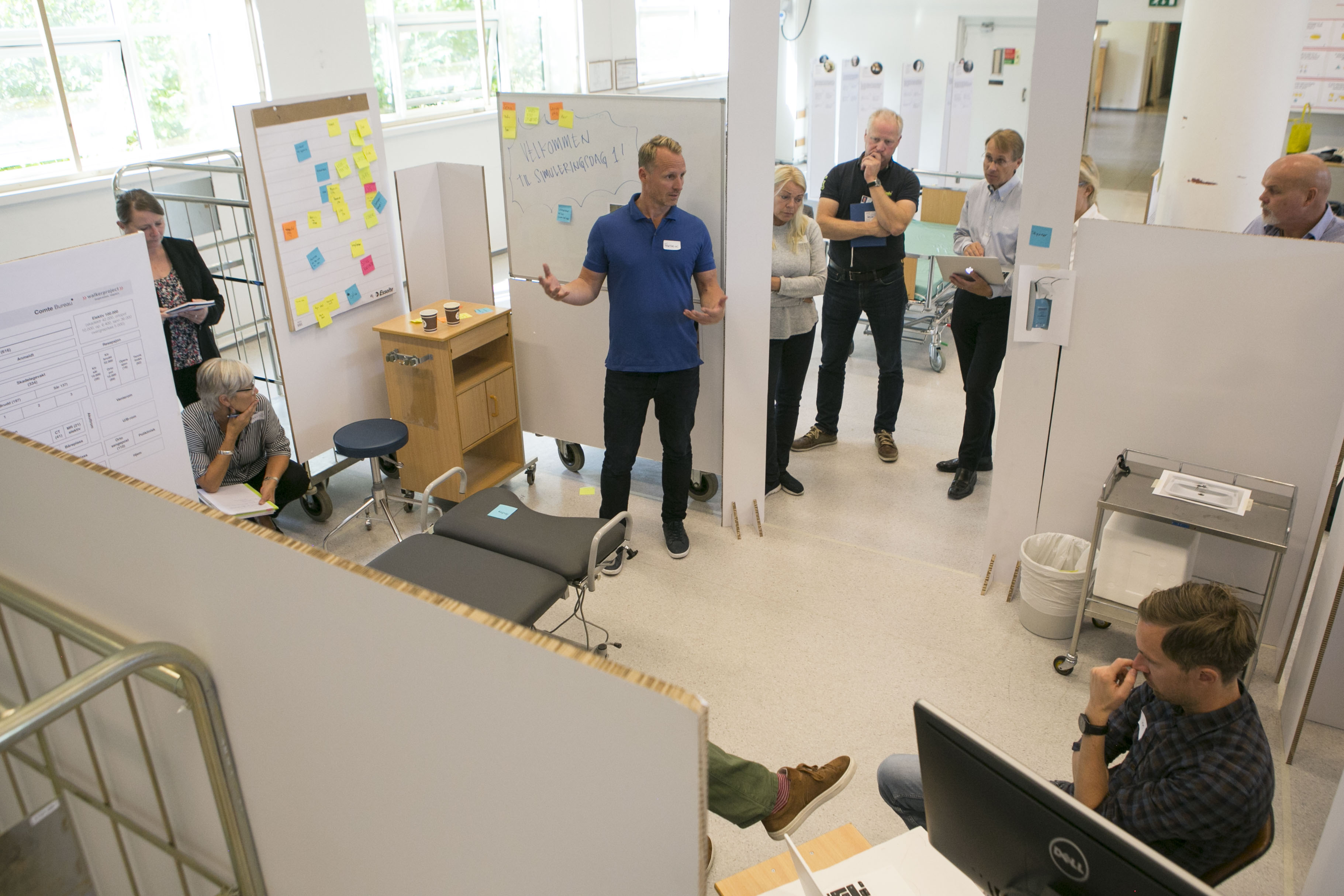Covid-19 vaccination in Zurich - an experience report The medical certificate, on which the "chronic…

Hospital Construction of the Future – for Patient-Centered Hospitals
When planning hospitals, it is important to keep an eye on future processes. Because these are decisive for the level of operating costs. In addition, ignorance about the future requires a high degree of flexibility for hospital buildings.
A hospital construction project is a big task for an organisation. The infrastructure is being planned today, will be put into operation in a few years and will be the place where patients are treated for 30 to 40 years afterwards. The problem is that we can only guess how patient needs will change over the next 40 years. We can only guess how medical and nursing services will change. And we have no idea what technological possibilities we will be equipped with in 2060. But what we do know for sure: it will have to be different from what we have today. This forces us to be more flexible.
The Patient in the Center
The Swiss hospital buildings of the 20th century are already user-centred. Unfortunately, they are geared towards the wrong users. The cadre physicians were the centre of power, the buildings tailored to their needs: short distances for the head physician. The senior doctors in the vicinity. A spacious office with a connected examination room. The secretariat right in front. The patient goes to the doctor. Even today, the maxim is to tailor the buildings to their users. But fortunately the balance of power has shifted. A successful hospital building places the patient at the centre. If all processes are effectively geared to the patients, everyone wins. This also means that hospital construction is primarily about processes. Processes that are safe for the patient. Processes that make good medicine possible and at the same time offer efficient working conditions for employees.
However, simply “thinking” the patient along is not enough. Too many assumptions and prejudices shape our thinking. The patient should already be included in the planning. In addition, a mix of key people is needed, who form a design team from the beginning and continuously help to develop it. These are certainly doctors, nurses, but also many other professional groups who are involved in the processes in the hospital. Together with the patient perspective, these users must ensure that the results of their requirements are not lost in the course of the construction planning.
Flexibility as a Design Principle
When we develop processes with patients and teams from a hospital, we look to the future together. How should the stay and treatment of patients be organised? How do the treatment teams want to work in the future? What developments are we facing in the coming years that will change the way we work in the future? With a little foresight, we are able to anticipate the developments of the coming years. No one can say today what will be in 20 or 30 years. However, the hospital buildings that are being built today will be in operation for a long time to come. For this reason, it is important that the buildings have flexibility as an essential design principle in their DNA.
Digital and Smart
Even if we do not yet know what will be technologically commonplace in 20 or 30 years’ time, we know one thing for sure: the hospital of the future will be digital. Digital means that information will no longer disappear in prose in report texts, but that it will be available in a structured form and can be prepared or further processed in a context-specific manner. Because the hospital of the future is intelligent. A simple example: sensors will detect when a patient rises dangerously from bed and threatens to fall. The next caregiver is alerted immediately. Another example is even further away: The performance of physiotherapy is documented according to the course of the conversation and the movement data. Consumables are automatically reordered. Any invoicing is triggered directly after the activity has been completed. And the next appointment is automatically booked into the treatment plan of the in-patient in a suitable, free slot according to the course of the conversation between patient and therapist.
It is also conceivable that weather forecasts, calendars of events in the surrounding area and empirical values forecast the expected number of patients in the emergency ward. If necessary, bed capacities can be organised or solutions sought with external partners a few hours before the traffic jam in an emergency. The hospital of the future will be able to proactively manage its capacity and solve bottlenecks – just as most companies are already doing today. These solutions already exist today. One example is the Humber River Hospital in Toronto, which has integrated an end-to-end digital solution for capacity issues across the entire hospital (a so-called “command center”).
With a View on the Business
Most actors in a construction project focus on the construction phase. And of course it is important to deliver the construction project at the agreed quality, within the promised time and budget. But a construction project is not an end in itself; it is built for operations. For this reason, it is important to establish a strong user perspective and a powerful voice of the users with a view to the years of operation throughout the construction project. A hospital costs above all in operation, in comparison, hospital construction is cheap. However, investment decisions are still made on the basis of construction costs, rather than on the basis of optimal processes with low operating costs. A look at the overall life cycle of a hospital shows the importance of a sophisticated planning phase. Supposed savings in this essential phase can quickly catch up with the operator later in operation.
At the very beginning of a planning process, it is decided how expensive the entire hospital, including operations, will be. The costs are incurred much later. But if this interplay between planning, execution and operation is successful, new hospital buildings are created that are designed to meet the requirements of the coming decades. The infrastructure will promote safety for patients, high-quality medicine as a system service and high efficiency – those central target vectors that are often lost sight of in a construction process.
Major New Hospital Construction Project
A new hospital building is a major project for any organisation. In order for it to be a lasting success, the following points are crucial:
- Early involvement of patients and employees
- Development of future workflows in an environment where they can be prototyped, simulated and tested
- Inclusion of medical, technological and social trends in the planning
- Flexibility as a design principle, so that the infrastructure can be adapted to changing requirements
- From the very beginning, keep the cost calculation over the entire service life and do not only think in terms of construction costs
You can find the original article from Heime & Spitäler here (in German).



